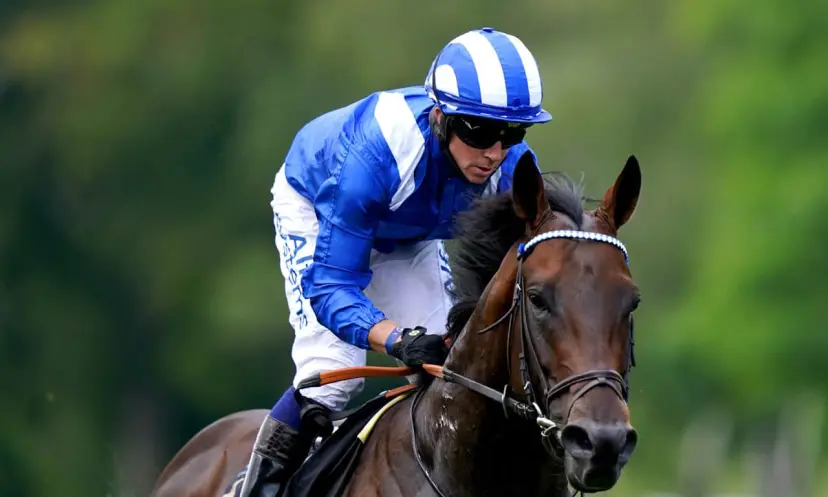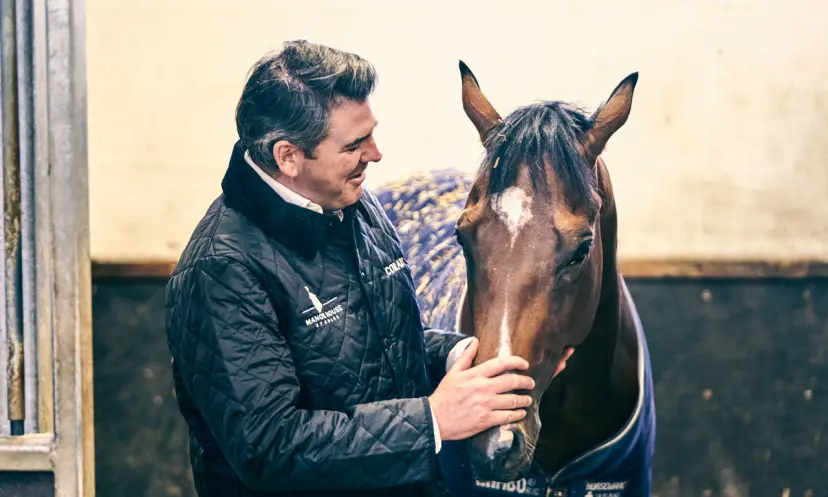Epsom Derby trends: Analysing the last 20 races
Published:
The Derby is the most prestigious event on the UK’s Flat racing calendar, with up to 20 horses aiming to join a roll of honour that dates all the way back to 1780.
Scheduled to take place this year on June 3, the Epsom showpiece is one of the five Classics and the middle leg of the English Triple Crown – sandwiched between the 2000 Guineas and the St Leger.
We have studied all 287 participants from the last 20 races to identify the key Epsom Derby trends ahead of the 2023 edition.
How do favourites perform in the Derby?
The smart money lies in backing one of the favourites at the Derby, with 14 of the past 20 renewals won by one of the three shortest-priced horses.
This includes 13 successive races between 2004 and 2016 (in which the favourite triumphed six times), as well as Desert Crown’s victory at 5/2 last year. That said, we have also seen outsiders triumph in this period, with 40/1 long shot Wings Of Eagles leaving the field in his wake in 2017 and triggering a run of five wins in a row for horses priced outside the top three favourites.
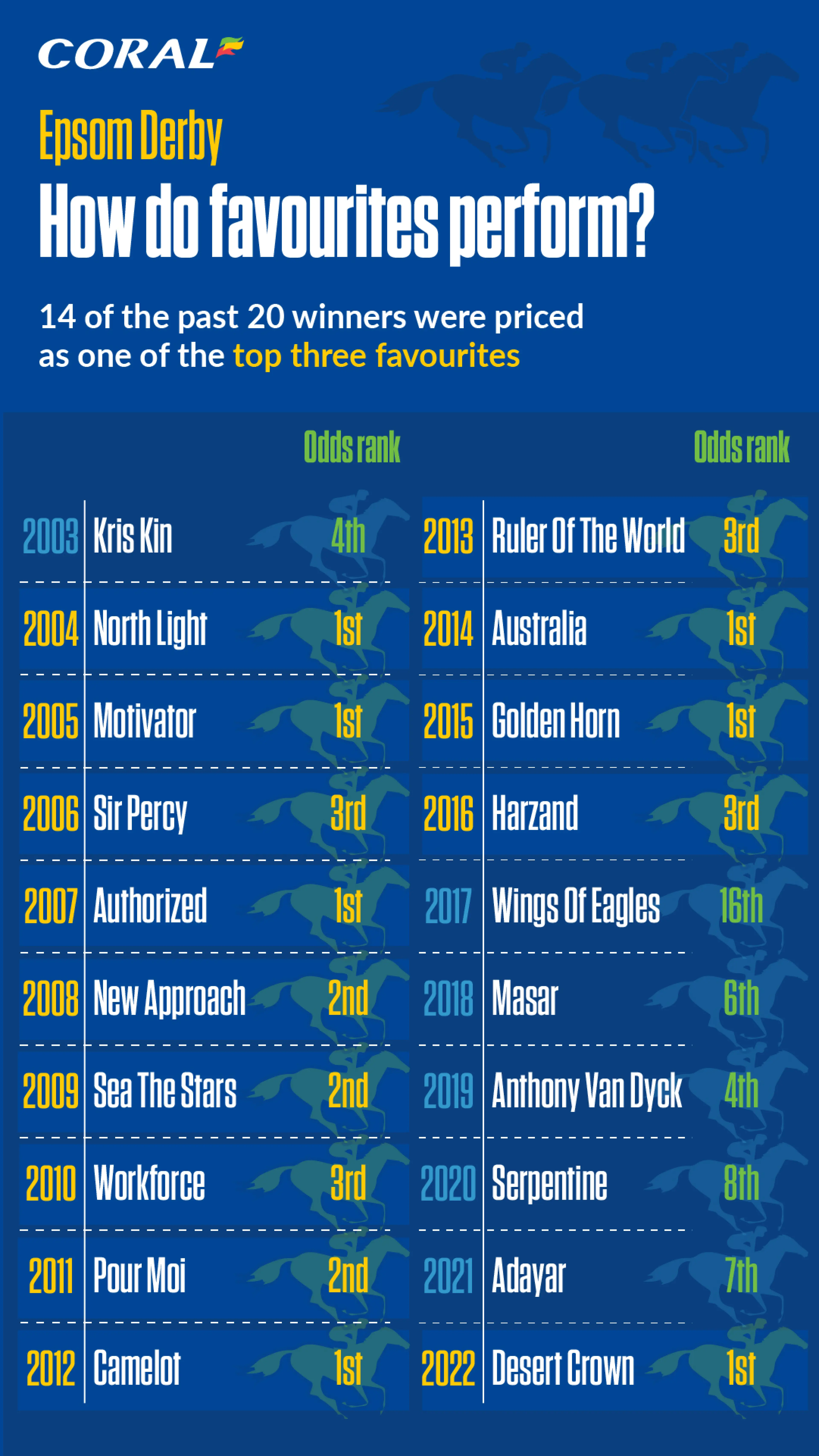
Even when the well-backed runners fail to win, they generally manage to finish on the podium. Since 2003, 16 of the 29 participants backed at 4/1 or shorter have crossed the line in first, second or third, equivalent to a 55 per cent success rate on an each-way bet.
A further 15 podium finishers were priced between 7/2 and 7/1 beforehand, out of a total of 36 in this bracket. The likelihood of a horse placing drops off sharply after that, with only eight out of 64 runners priced between 15/2 and 15/1 finishing in the top three.
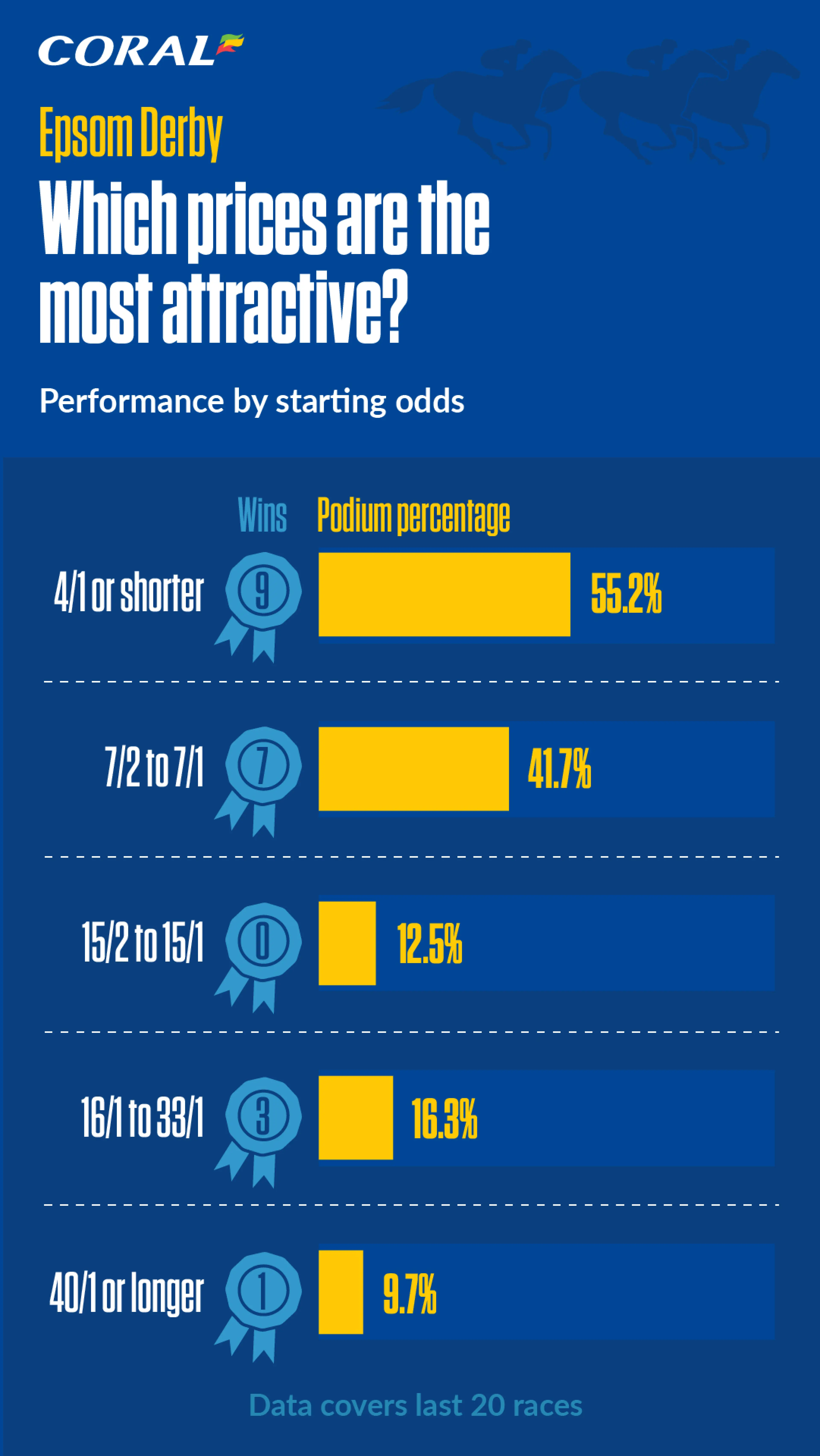
There has been more value in the 16/1 to 33/1 bracket, with 14 podiums shared among 86 participants. This includes victories in 2018, 2020 and 2021 for Masar (16/1), Serpentine (25/1) and Adayar (16/1) respectively.
Only two horses have paid out after being priced in triple digits before the race, with Hoo Ya Mal’s runner-up finish at 150/1 in 2022 following in the footsteps of At First Sight (100/1) in 2010.
Who has the best Derby record?
William Buick has been the most consistent among active jockeys over the past 20 years, with a win and four further podiums from 11 starts. The Norwegian-born rider edges out three-time champion jockey Ryan Moore, who won on Workforce and Ruler Of The World in 2010 and 2013 respectively.
The prolific Aidan O’Brien leads the way for race wins among trainers, with six of his record eight Derby victories coming in the last two decades. However, O’Brien ranks only fourth in terms of podium percentage, having entered a whopping 86 runners in that time.
Sir Michael Stoute has the edge on O’Brien and other counterparts when it comes to share of top three finishes, with six of his 12 entrants having placed since 2003. The 77-year-old entered the Derby for the first time in six years in 2022 and celebrated in style as Desert Crown earned him a sixth victory.
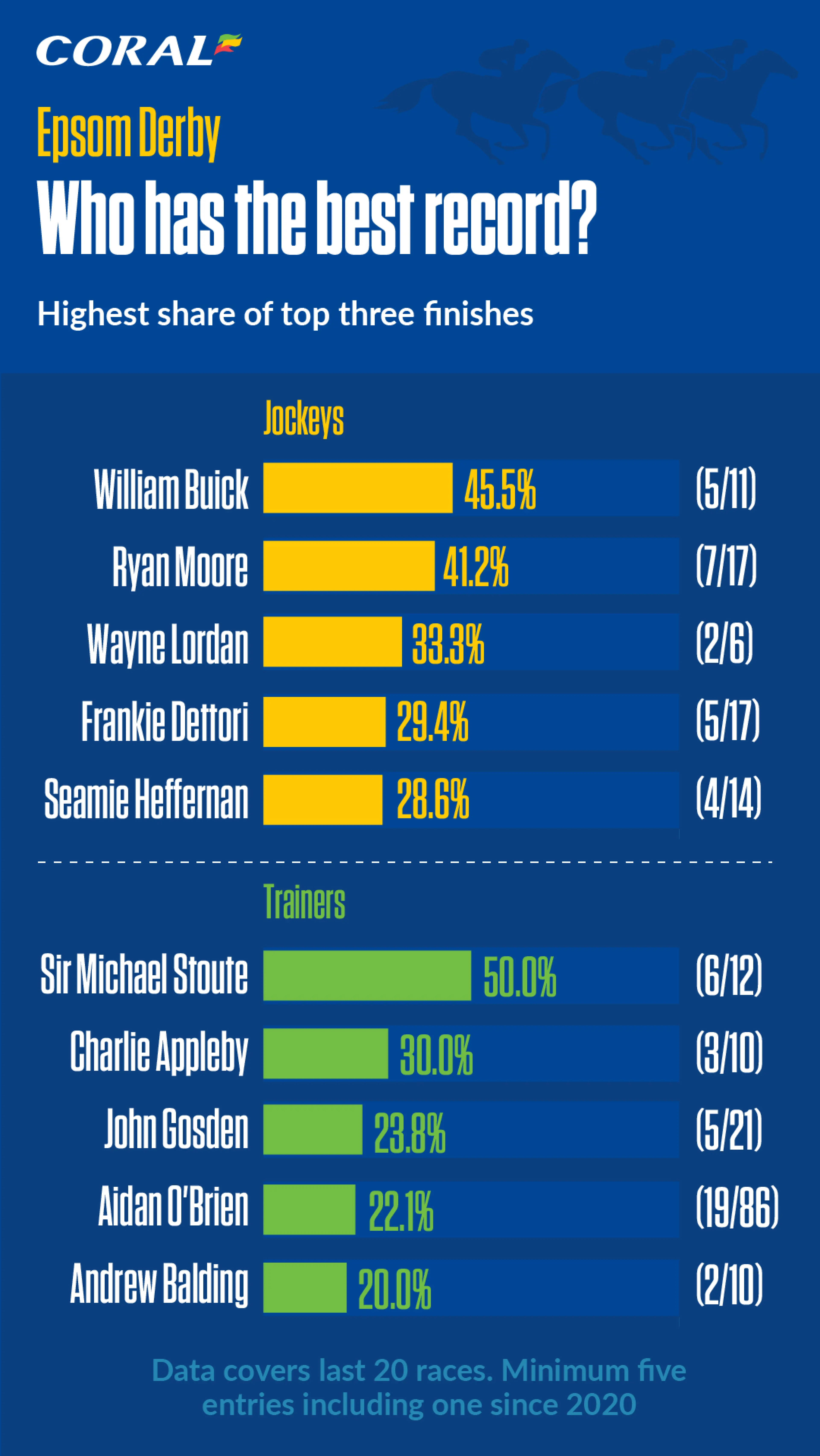
Much of the attention this year will fall on Frankie Dettori, who is retiring from racing at the end of 2023.
The charismatic Italian is already enjoying a memorable season, having ridden to victory on Chaldean at the 2000 Guineas. He is bidding to complete a Guineas-Derby double for the first time in his 35-year career, although he will be doing so on John Gosden’s Arrest rather than Andrew Balding’s Chaldean.
Based on Epsom Derby trends, this change could count against Dettori. Mick Kinane (2009) and Joseph O’Brien (2012) are the only two jockeys to have won the first two legs of the Triple Crown in the same year since Willie Carson in 1989, but both achieved the feat on the same mounts with Kinane’s double coming aboard Sea The Stars while O’Brien was on Camelot.
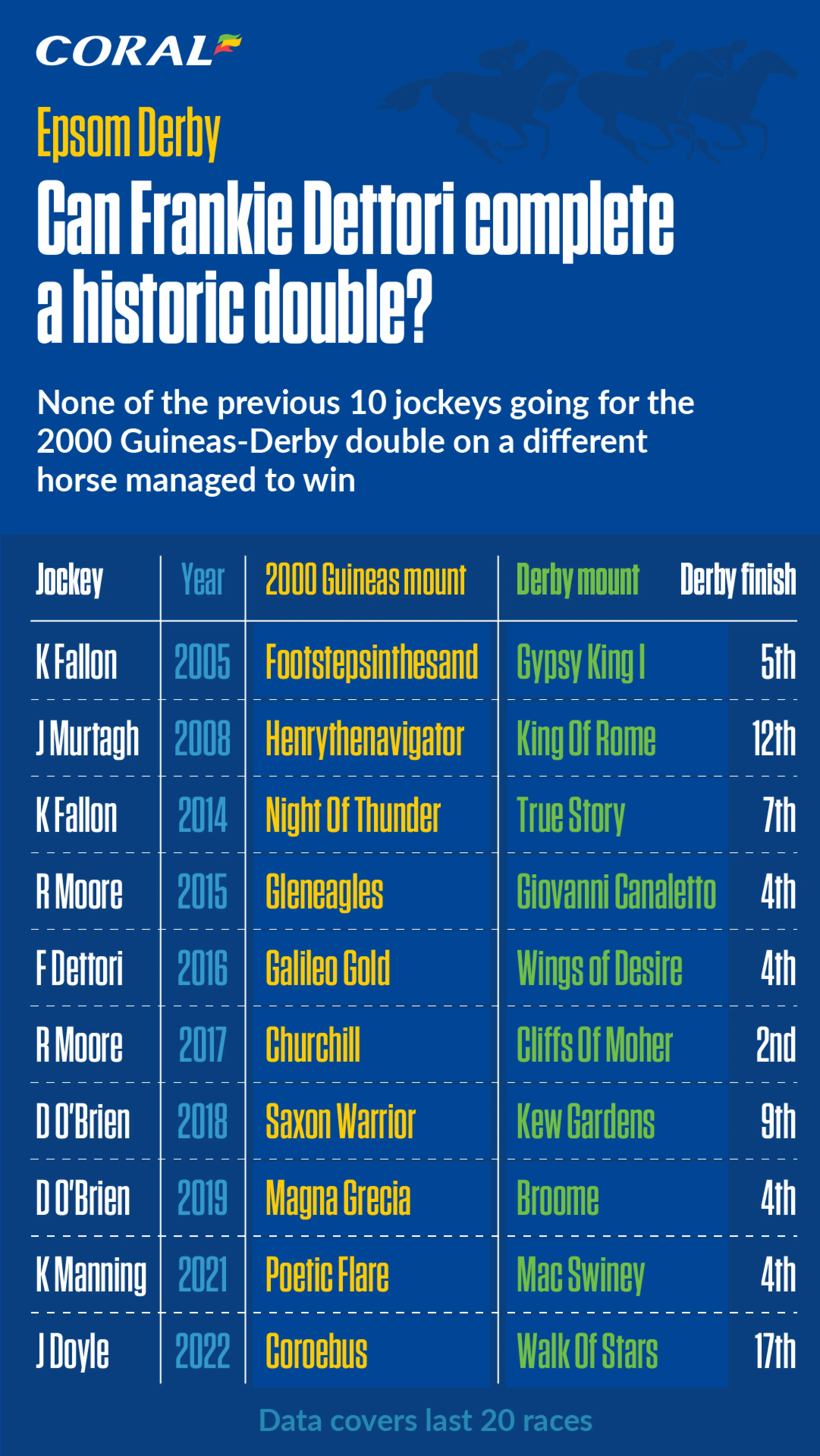
What is the best draw at the Derby?
Ridden over a distance of one mile, four furlongs and 10 yards and lasting a mere two-and-a-half minutes, the Derby is racing’s equivalent of a 100-metre sprint.
Just as athletes are required to start from the blocks to ensure that no-one gains an advantage, horses are placed in stalls to guarantee a fair race.
However, some punters believe that the nature of the Epsom racecourse inhibits those drawn in the inside lanes. There is an early right-bending kink for horses to negotiate, which can lead to the lower-stalled participants getting bunched up behind the frontrunners.
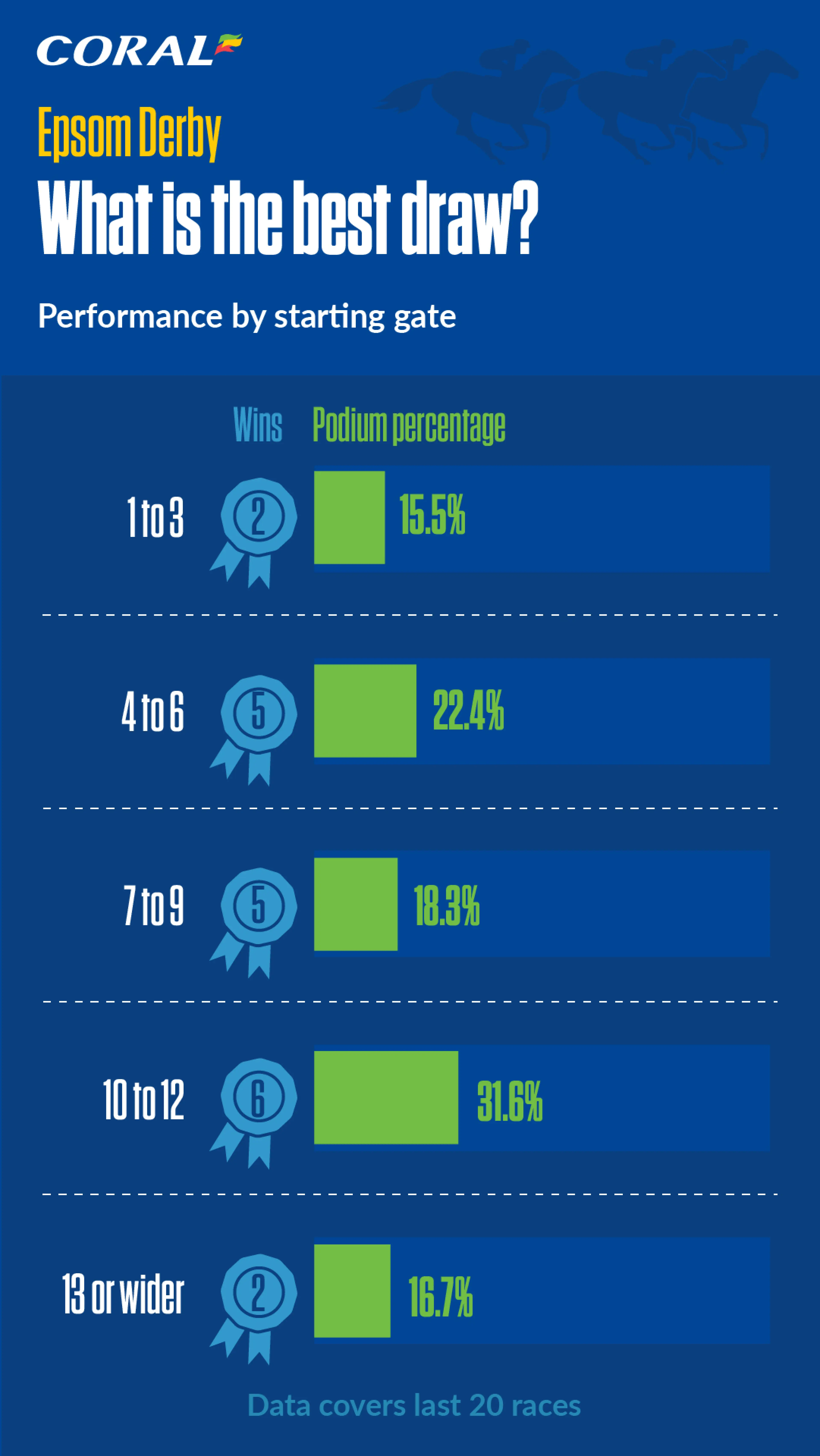
The Epsom Derby trends data appears to back this up, with entrants starting from stalls one to three managing only two victories between them since 2003. Runners have enjoyed greatest success when starting from gates 10 to 12, with a combined six wins in the previous 20 years including five in the last decade.



